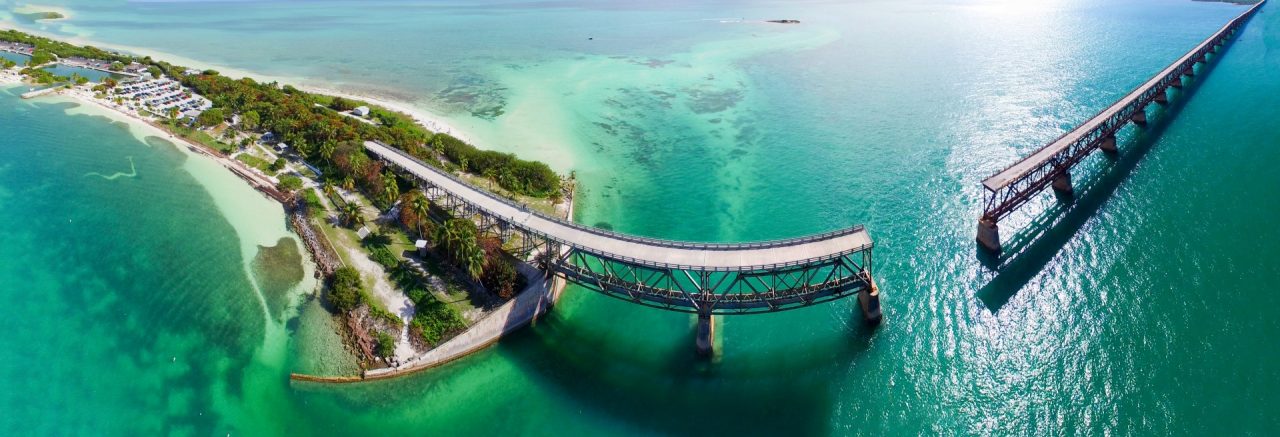Preserve water resources, restore the ecosystem, and build new infrastructure that increases protection and resilience in the face of climate damage. The U.S. Army Corps of Engineers (USACE) has announced an intensive project schedule for 2022, with spending totaling $22.8 billion made available by the U.S. administration through $17.1 billion from the Infrastructure Investment and Jobs Act, and another $5.7 billion from the Disaster Appropriations Act.
This is additional funding that will allow the U.S. Army Corps of Engineers to improve existing infrastructure, repair dredging channels in response to flooding and coastal storms, and reclaim critical areas.
New projects to protect the Everglades
On the list of projects, Florida leads the way with $1.1 billion being spent to restore the Everglades, the green lung of the United States, with plans to collect and store excess surface water, manage water releases and minimise infiltration losses during dry periods.
This federal funding entrusted to the U.S. Army Corps of Engineers is the latest project in the Comprehensive Everglades Restoration Plan (CERP), which over the last two decades has aimed to recover and preserve this natural resource that lies in the southernmost tip of the country. Of the series of projects, the most important was awarded to Webuild Group through its U.S. subsidiary Lane Construction.
The main hub for the Everglades’ hydrological recovery is Lake Okeechobee, the eighth-largest lake in the United States and Florida’s biggest. Named after the contraction of the words water (oki) and large (chubi) in the language of various Native American tribes, from the Hitchiti and the Mayaca to the Seminole, this natural basin has its main outlet in the Kissimmee River and with other outgoing channels forms two large estuaries: Caloosahatchee in the Gulf of Mexico area and St. Lucie on the Atlantic coast north of Palm Beach.
The Caloosahatchee C-43 West Basin Storage Reservoir (WBSR) project, awarded to Lane, aims to redevelop marshlands and contain wastewater by constructing a reservoir in the Caloosahatchee Estuary, with an earthen dam with a 26.2-kilometer perimeter and a 4.5-kilometer separating septum between the two reservoirs. In total, the reservoirs will cover approximately 40.5 square kilometers and contain 210 million cubic meters of water. During rainy periods, the basin will contain contaminated water from residential and agricultural lands in the area and, during dry periods, provide the water supply needed to maintain optimal salinity levels. Completion is expected in 2024.
The U.S. Army Corps of Engineers come to the rescue
Since the 1960s, the U.S. Army Corps of Engineers, whose origins date back to the late 1700s, has become the leading agency for environmental conservation and restoration, with full responsibility for and management of civil infrastructure, including more than 600 dams and 12,000 miles of commercial inland waterways. It also performs dredging of more than 150 million cubic yards and is responsible for the maintenance of 926 ports. It owns and operates 24% of U.S. hydroelectric capacity or 3% of total U.S. electric capacity.
The program announced for 2022 will examine projects in four states where major disasters were declared last year by Hurricane Ida: New Jersey, New York, Pennsylvania and Louisiana. In the latter, funds of $500 million are being earmarked to rebuild infrastructure put to the test by floods and storms, and to improve the main branch of the lower Mississippi River.
Focus on the Mississippi
Some of the largest plans are focused on the Mississippi River, with projects totaling $732 million in the St. Louis region between Missouri and Illinois to improve navigation and environmental habitats. Federal funds will allow for the construction of a new 365-foot lock in the Lock and Dam 25 hydraulic system, because the current 182-foot lock, opened in 1939, cannot accommodate large shipping barges. Also, just to the north, $97.1 million will be spent on works in the Lock and Dam 22 complex to improve fish passage.
Finally, the New Soo Lock project in Sault Ste. Marie, Michigan (along the Canadian border), will receive $480 million in funding. It will be critical to increasing resiliency in the Great Lakes navigation system. There are currently two active lock chambers at the Soo Locks facility, the Poe and MacArthur Locks. The Poe Lock is the only one large enough to allow 300-foot freighters to pass. The new Soo complex will replace the inactive Davis and Sabin locks and will be the same size as the Poe Lock, with a length of 365 feet and a height of 110.
This hub is important because of heavy maritime traffic. Approximately 80 million tons of commercial cargo passes through the Soo Locks each year. The facility, which operates along the St. Mary’s River in the Detroit district, is operated and maintained by the U.S. Army Corps of Engineers and is the main route for the country’s iron ore supply chain.


